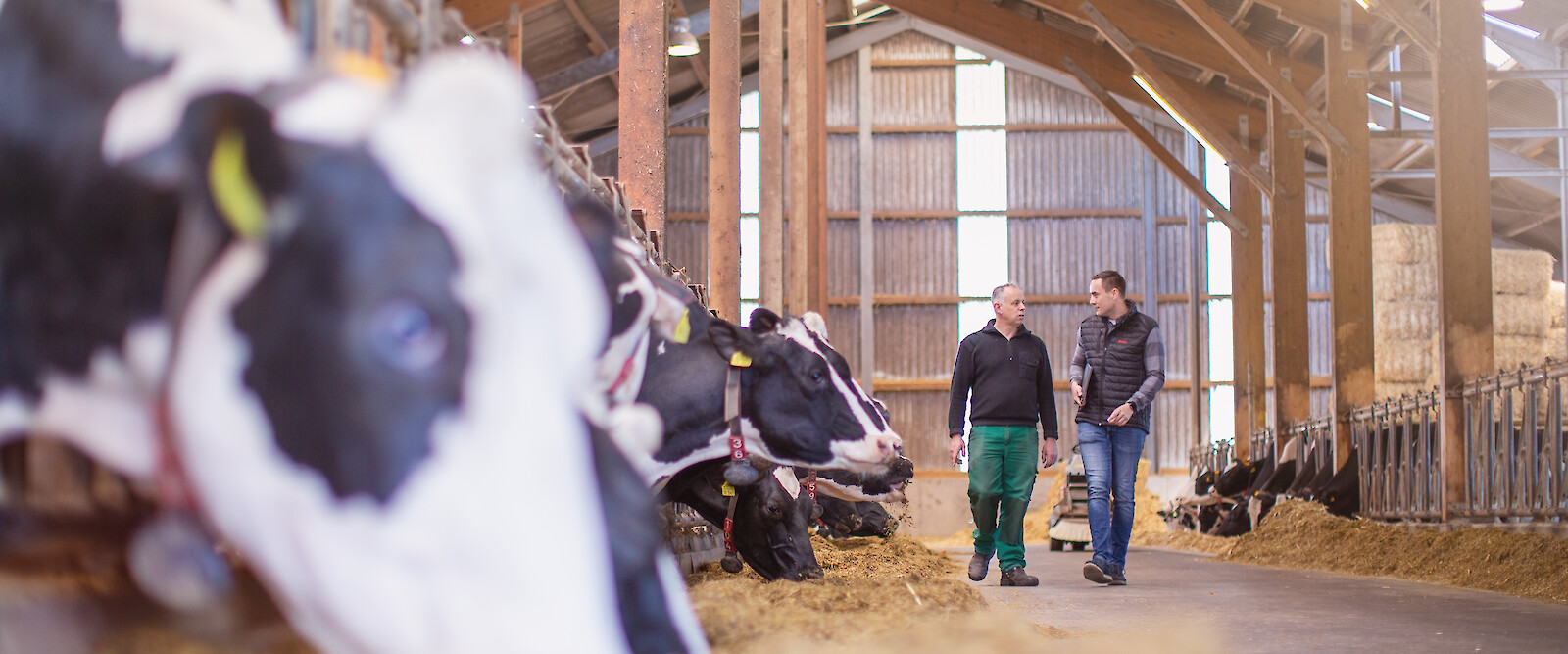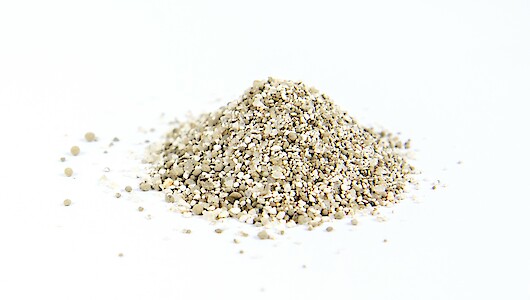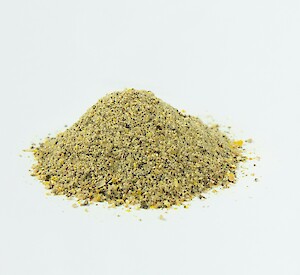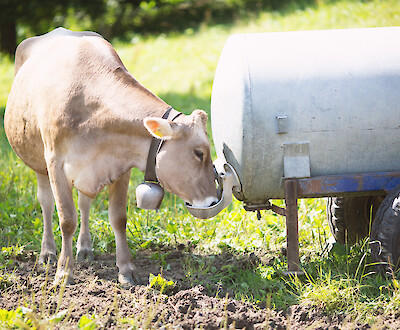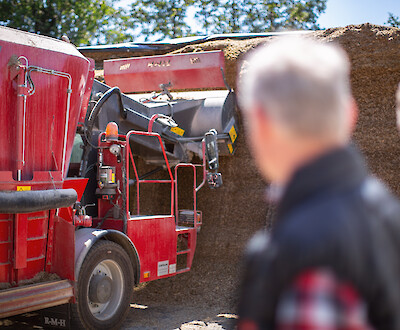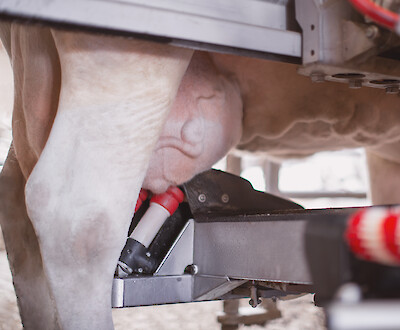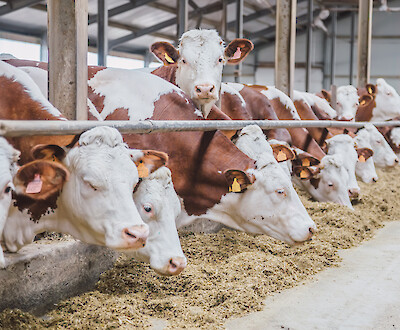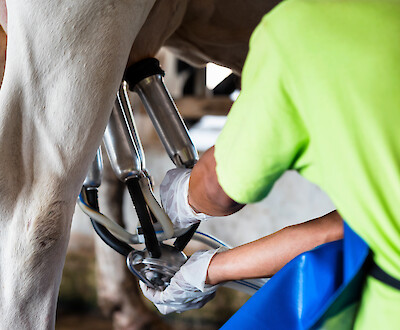Optimisation of mineral supply in cattle feeding
What you should consider when choosing your mineral feed
Many cattle farmers enhance the basic ration with mineral feed. A ration calculation is important for an exact, needs-based and economically adapted feeding. An efficient mineral supply should also take the farm situation into account holistically. This requires a flexible mineral feed concept. This applies to the supply of bulls as well as to dry cattle, young cattle, lactating dairy cows and sheep. Otherwise, there is a risk of over- and undersupply with vital bulk and trace elements and thus performance losses or undesirable effects on the health and welfare of the animals.
The ration design directly influences the mineral and nutrient supply of the herd. Only an optimal supply helps to develop the performance potential of the animals and to maintain their health in the best possible way. Before choosing the right mineral feed, the ration must be calculated and the basic feed analysed. Farmers should not only determine the nutrient content (e.g. energy, protein) in the ration. The mineral content should also be analysed. A concrete analysis is important because the content of bulk and trace elements in the individual feed components can vary considerably. A calculation based on average values therefore often misses the reality.
Feed analysis and ration design are worthwhile
Only when it is known which quantity elements are provided by the silages on the farm can the appropriate mineral feed be selected. Farm managers do not need to be afraid of the additional costs for the corresponding analyses: The ration optimisation and exact coordination of all feed components leads in most cases to a noticeable reduction of the total feeding costs per animal and day. In this way, the costs of feed testing are put into perspective and more than compensate for themselves later, as fattening and milk production become even more economical.
Mineral feed - for a balanced ration
Mineral feeds belong to the group of supplementary feeds. They serve to balance the basic ration of farm-produced feed with minerals and active substances. For this purpose, mineral feeds contain a wealth of vital ingredients that take over important metabolic functions and are involved, for example, in the formation and functioning of enzymes and hormones. These include:
- Quantitative elements (e.g. calcium, sodium, magnesium, phosphorus),
- Trace elements (e.g. zinc, manganese, copper, iodine, cobalt and selenium) and
- Vitamins (e.g. vitamin A, vitamin D3, vitamin E).
In addition, they can contain special additives that have further positive effects. In dairy cattle, for example, these include biotin, live yeast or protected methionine.
Phosphorus: (unnecessary) cost driver in mineral feeds
All unnecessary bulk and trace elements in mineral feed cost money. Phosphorus is a particularly expensive feed component that can quickly become a cost driver. The more phosphorus (P) a mineral feed contains, the higher the deciton price. An analysis of the P content in the basic feed is therefore essential. If the amount of P is sufficiently high, a corresponding supplement can be dispensed with.
Anna Dittrich, Product Manager Beef"Our experience shows that no additional phosphorus supplementation via the mineral feed is necessary as soon as the grass silage has a P content of more than 3.5 g/kg dry matter ™ or the maize silage of more than 2.0 g/kg DM. Here, however, it is recommended to take into account farm-specific factors such as other ration components and concentrate supplements in a ration calculation."
A lot helps a lot? Not with mineral feed!
The composition of the mineral feed should fit the total ration. This has economic advantages on the one hand, and on the other hand it helps to avoid undesirable interactions and over-supply, which can have a negative effect on animal health and performance. An oversupply can, for example, reduce the overall feed intake, cause diarrhoea or even impair fertility.
If mineralised compound feeds are also used on the farm, farmers should pay particular attention to the exact coordination of the mineral supply. For example, if a high-quality mineralised milk feed (MLF) is used, which optimally feeds the high-performance cow, the mineralisation at the trough should be adjusted accordingly.
Modular mineral feed systems allow farm-specific solutions
In practice, modular mineral feed concepts that can be adapted to the farm situation have proven their worth. With modern concepts, balanced basic mineral feeds can be flexibly expanded with useful additives that have positive effects. Depending on the objective and the situation on the farm, it is possible to choose suitable "building blocks" or supporting concepts. This is the only way for farmers to react quickly and easily to current conditions. Sudden heat stress, for example, can be countered by switching to a mineral feed concept with sodium carbonate. Modular mineral feed concepts such as deukaMin offer a variety of solutions in this respect.
Conclusion
- Mineral feeds are an important part of a balanced ration on many farms.
- In order to align the mineral feed ideally with the total ration, the basic feeds should be analysed and a ration calculation made.
- Additional costs for analyses are quickly offset by ration optimisation.
- Unnecessary and cost-intensive components in the mineral feed can also be excluded in this way - phosphorus in particular is often a cost driver.
- Over- and undersupply of vital bulk and trace elements should be avoided, as they can have negative effects on the health of the animals (e.g. diarrhoea) and reduce growth and performance of the animals (e.g. decrease in fertility).
- Modern mineral feed concepts such as deukaMin are modular in design and can thus be ideally adapted to the farm situation. This is flexible and efficient.
Further information
- Article "Mineral feed" on the website of Deutscher Verband Tiernahrung (DVT).
- Read more about the savings potential of phosphorus-free mineral feeds in the interview with Prof. Dr. Hubert Spiekers (LfL Tierernährung) and Wolfgang Müller (Bayerische Staatsgüter) on top agrar online.
- Leaflet 444 "Consideration of N- and P-reduced feeding methods in the nutrient excretions of dairy cows" of the Deutsche Landwirtschafts-Gesellschaft (DLG)
Contact person

Downloads
Contact person

